
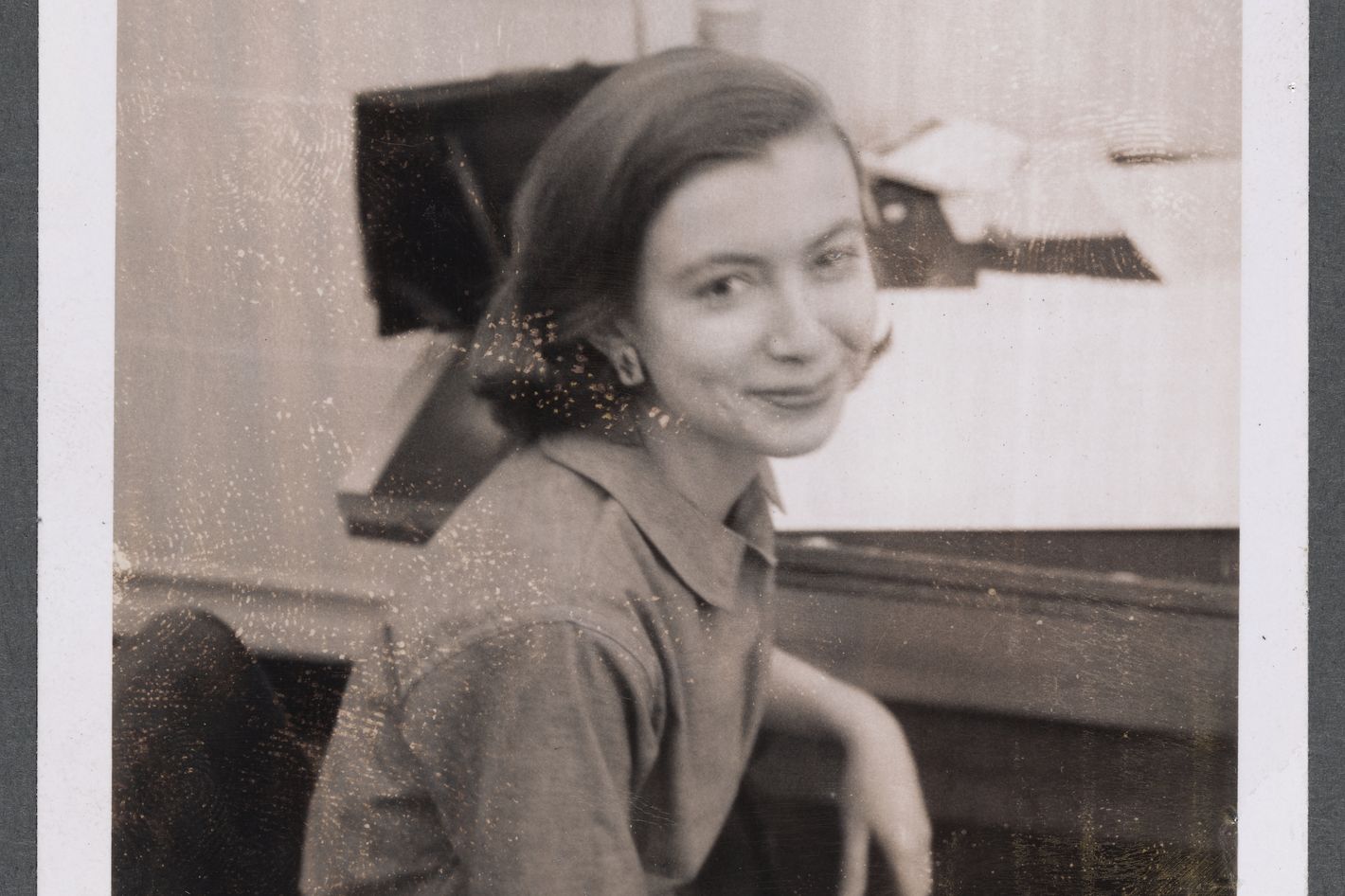
Joan Didion, unsurprisingly, took a lot of notes. The author and journalist, who died at 87 in 2021, also kept those notes, and her datebooks, and more generally the paper trail of her literary legacy. All of it, after her death, went to the New York Public Library, knitted together with that of her writer husband, John Gregory Dunne. “They’re very intertwined,” says Meredith Mann, one of the librarians managing the new collection. “I was very taken with how personal the collection was. There’s so much material there about her process, but there’s also so much introspective material about her as a person. And you can’t fully understand one without the other.”
Although Didion may have done a little manicuring before the donation went in — “she was an extremely intentional person,” Mann admits — it sure doesn’t seem as though she burned much. The 336 boxes constituting the Didion-Dunne archive are available to researchers starting today, by appointment, and even the most cursory look through them is revealing, fascinating, and simply entertaining. Scholars will be picking through it all for centuries, but here’s a first-day look at a few of the more eye-opening objects.
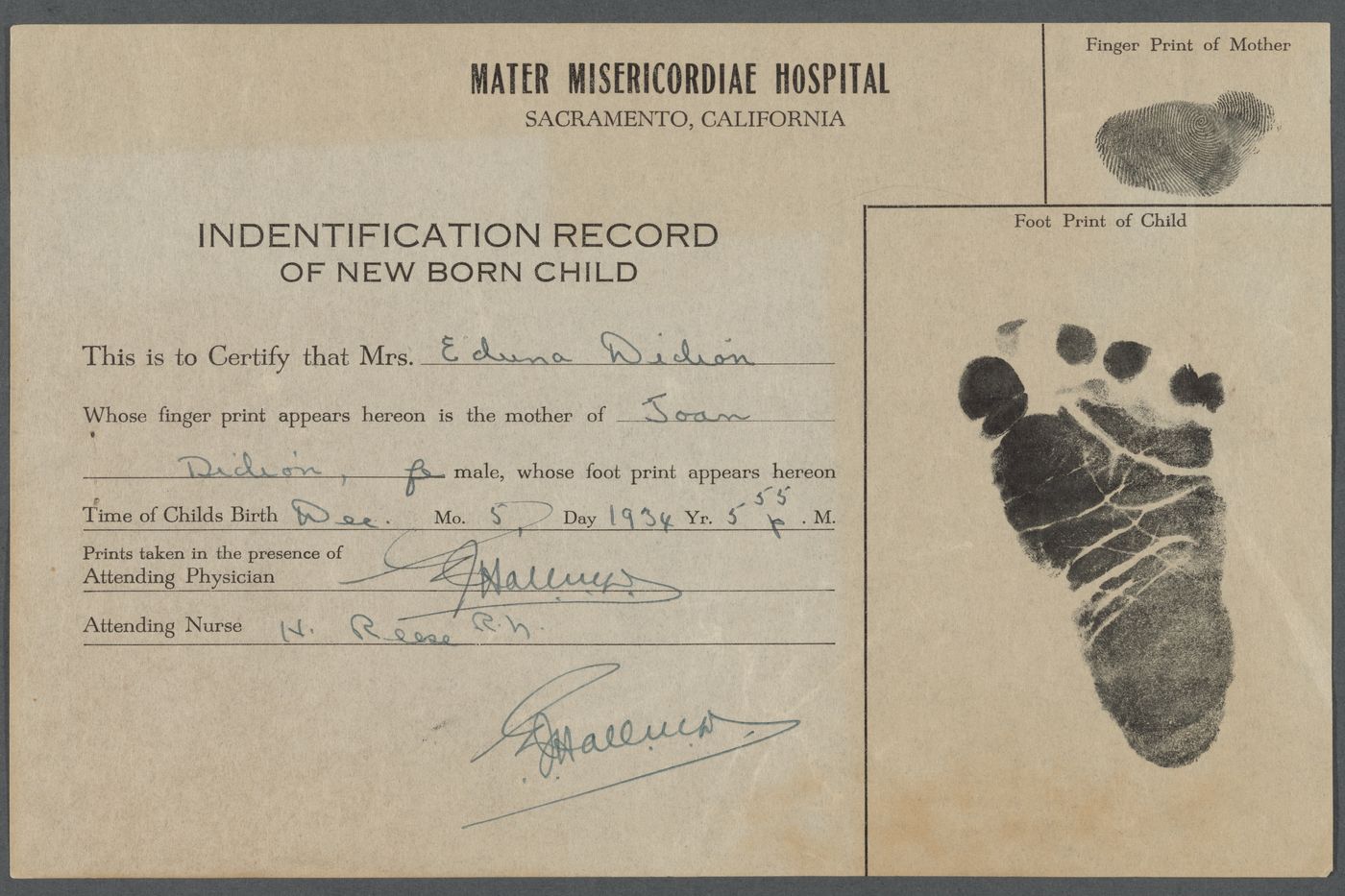
Didion’s birth certificate, with her footprint and her mother Eduene’s fingerprint, dated December 5, 1934.
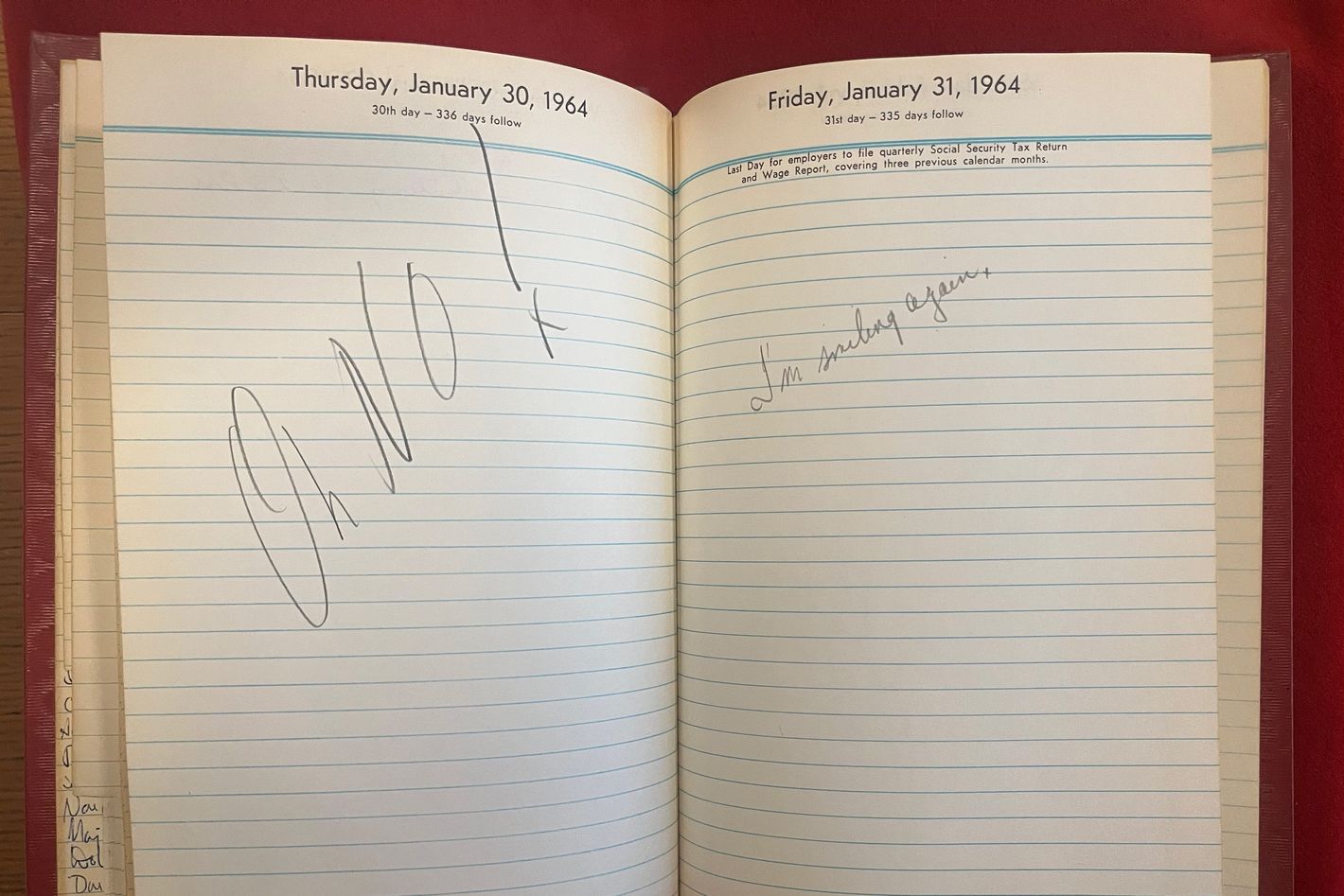
A pair of Didion’s diary entries that seem bizarre — until you learn that January 30 was the day of her wedding to John Gregory Dunne. The next morning, she wrote “I’m smiling again.” (Much smaller.)

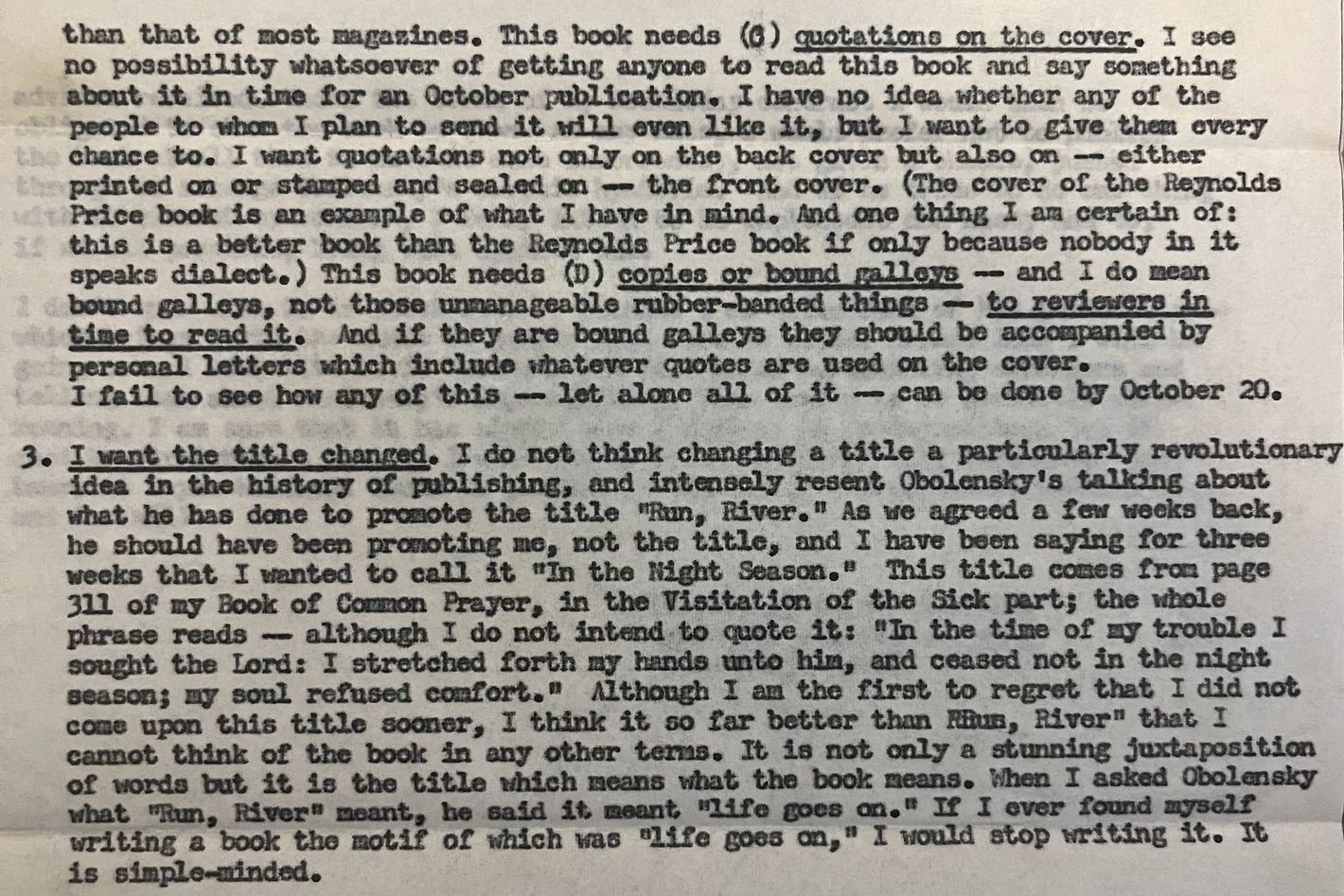
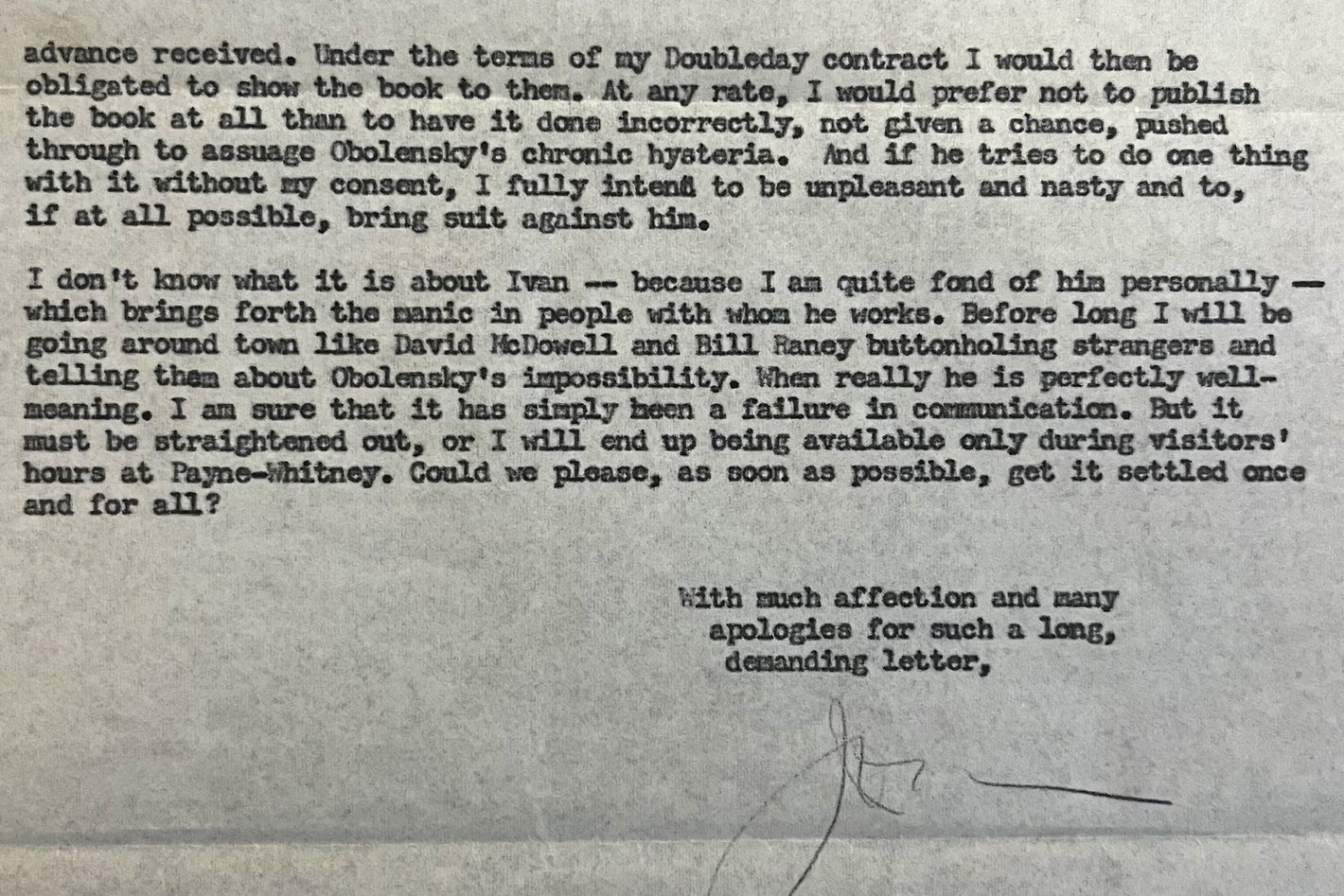
In this firm — very firm — letter from June 20, 1962, Didion writes, via an intermediary (possibly the literary agent Monica McCall), to the publisher of her forthcoming first novel, Run River. “As you may have gathered by now, I am a kind of conversational Helen Keller,” she begins, “and it is perhaps difficult for me to make clear, in conversation, exactly what I have in mind.” Whereas, setting it down on paper, she is completely direct. She threatens to withdraw the book unless her demands are met: 1) I want until July 15 to finish the copy. 2) I want the book postponed until early spring. 3) I want the title changed. She got her way on the publication date, which ended up being April 26, 1963, but not on the title, which she had wanted to change to In the Night Season.
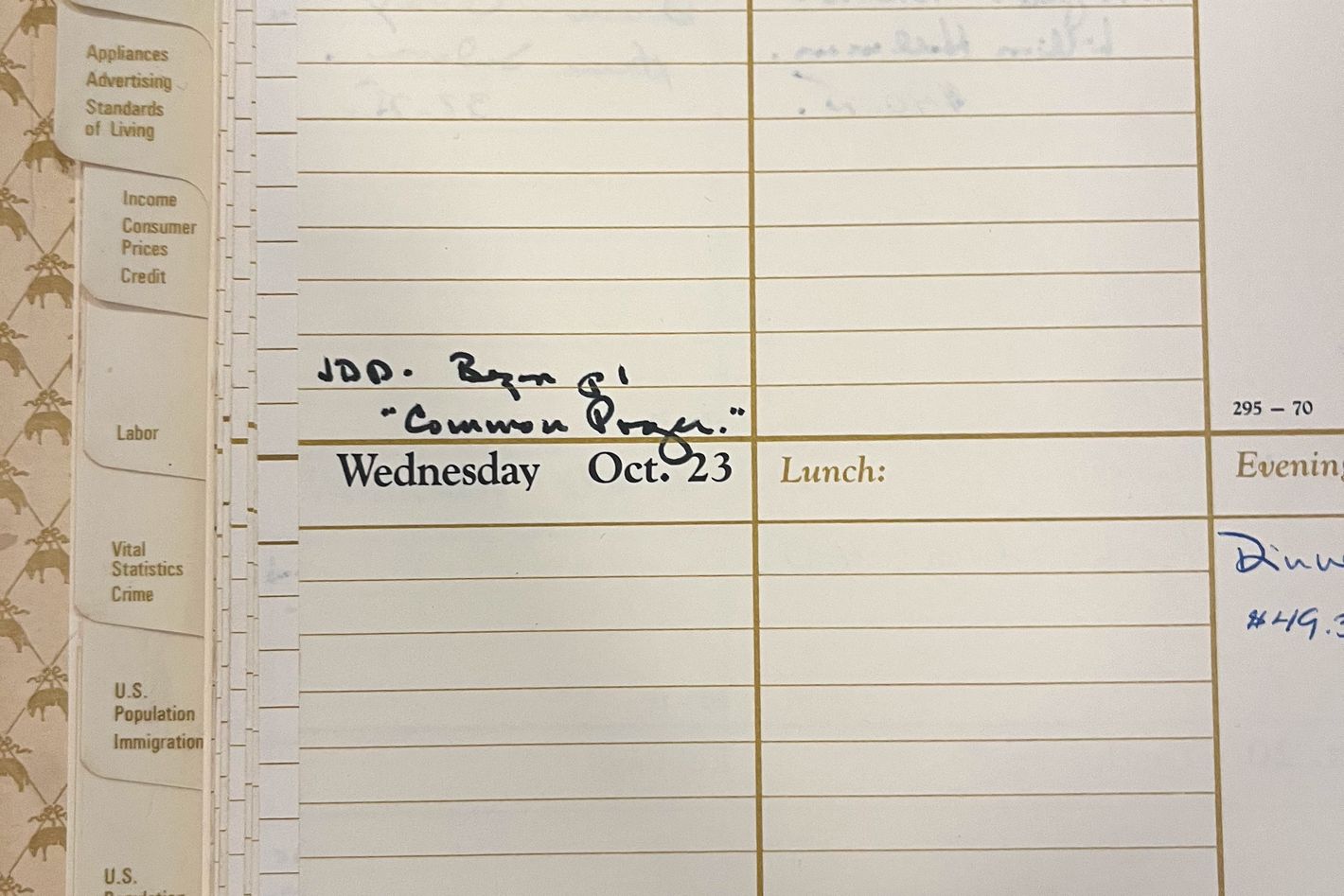
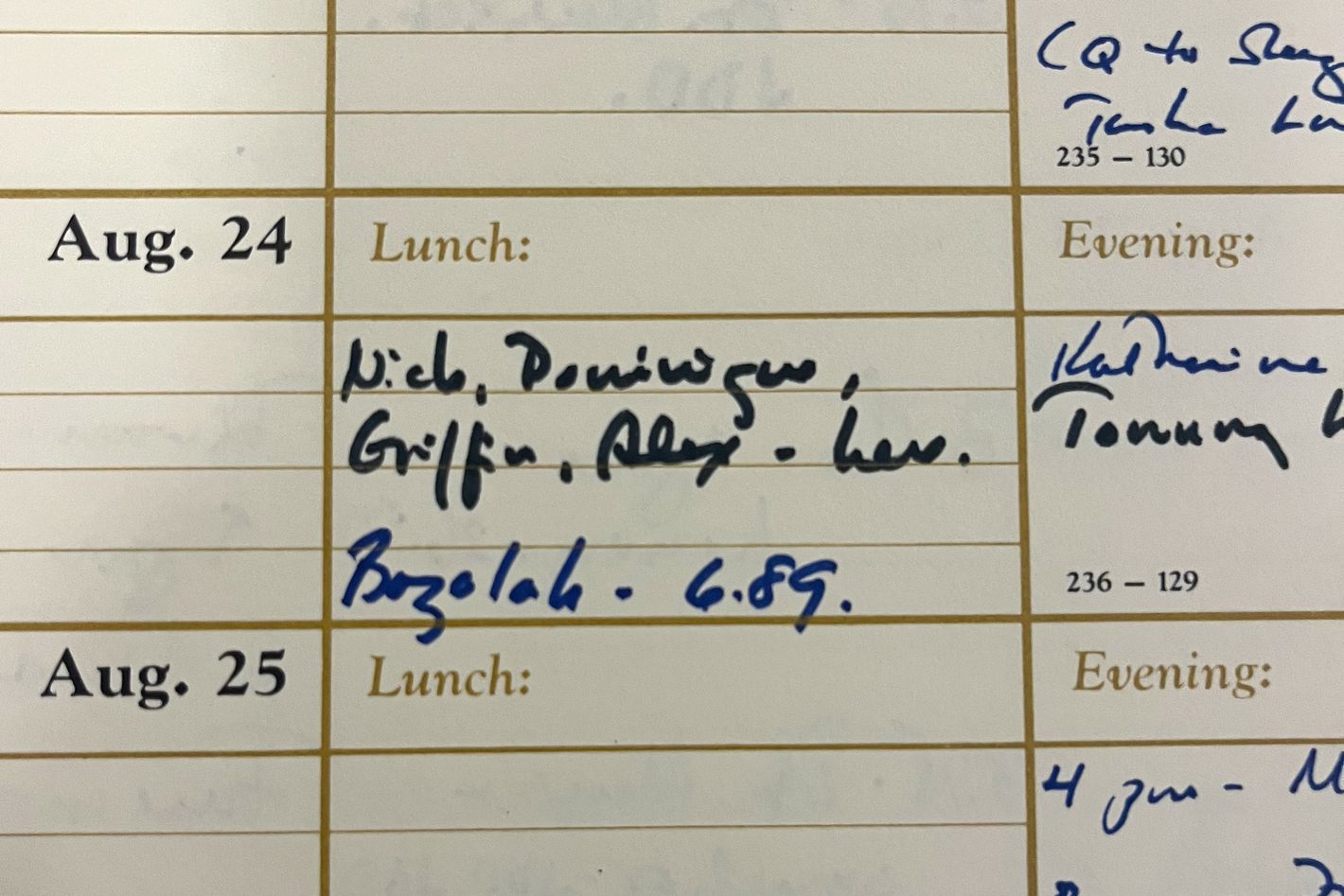
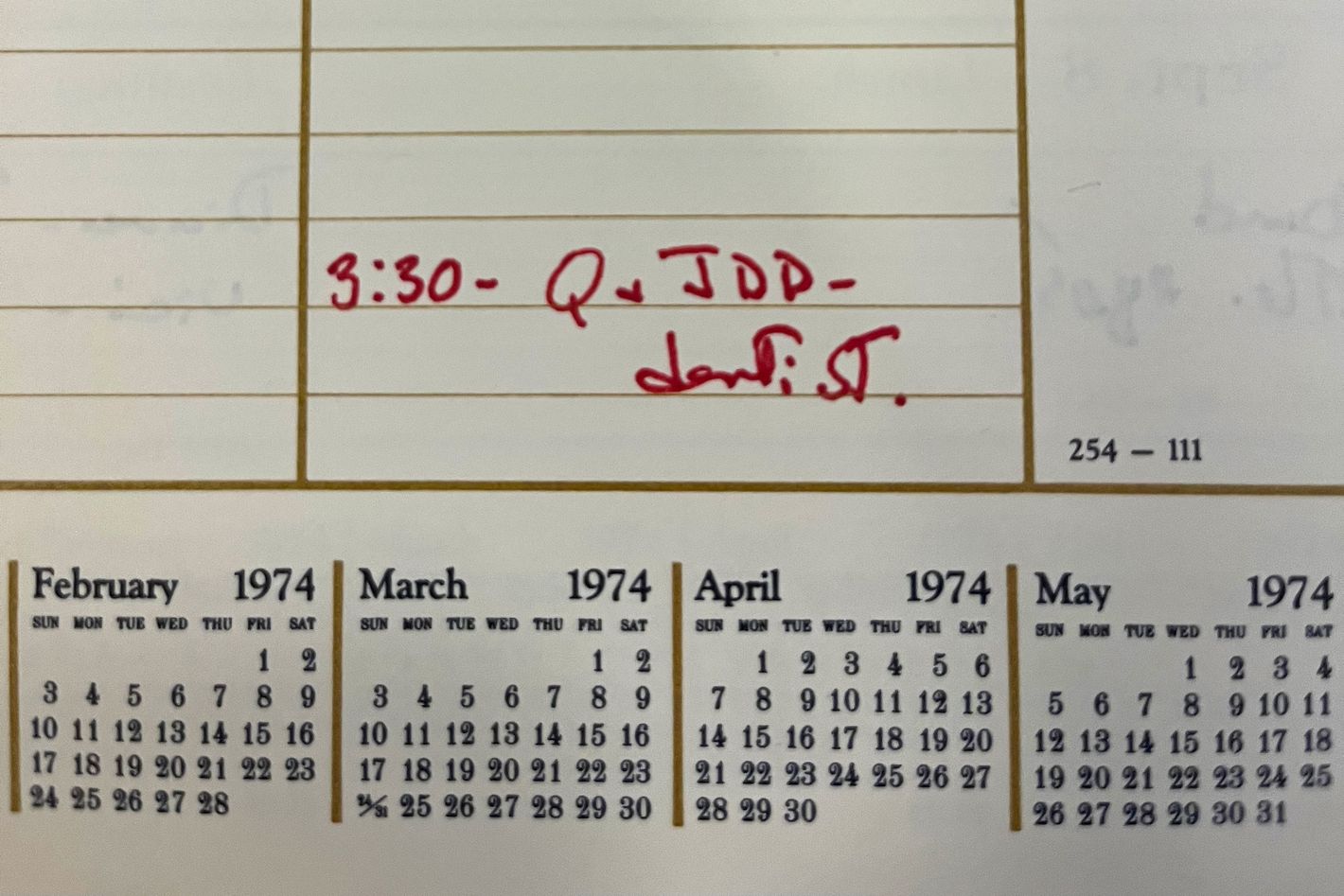
The Didion-Dunnes’ daybooks record mundanities and milestones alike. In these entries from 1974, “JDD” — her husband is always “JGD” — marks her first day of work writing the acclaimed novel A Book of Common Prayer; the couple has lunch with John’s brother, Nick, and his children, including Griffin Dunne and Dominique Dunne, who would be murdered eight years later; and Joan and their daughter, Quintana Roo, head to the dentist.
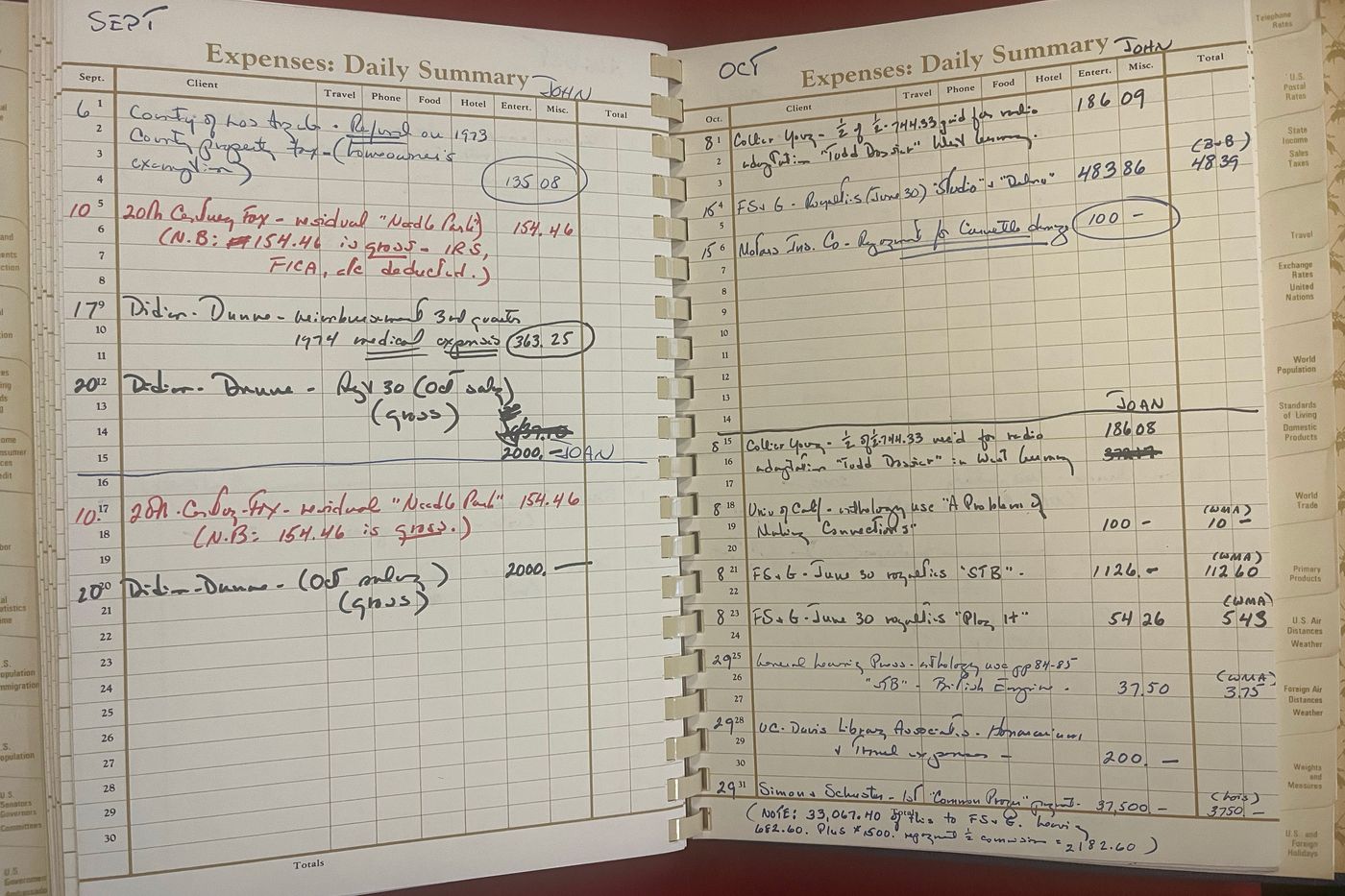
The datebooks also record money coming in and out — John’s on the top half of the page, Joan’s below. In October 1974, she took in (among other checks) $54.26 in royalties for her books Play It As It Lays and $1,126 for Slouching Towards Bethlehem, plus a first payment of $37,000 for A Book of Common Prayer. Dunne got $483.86 for Studio and Delano. There’s also a $100 reimbursement from their insurer recorded as “for Corvette damage,” almost surely referring to the 1969 Stingray in which Didion was memorably photographed by Julian Wasser.
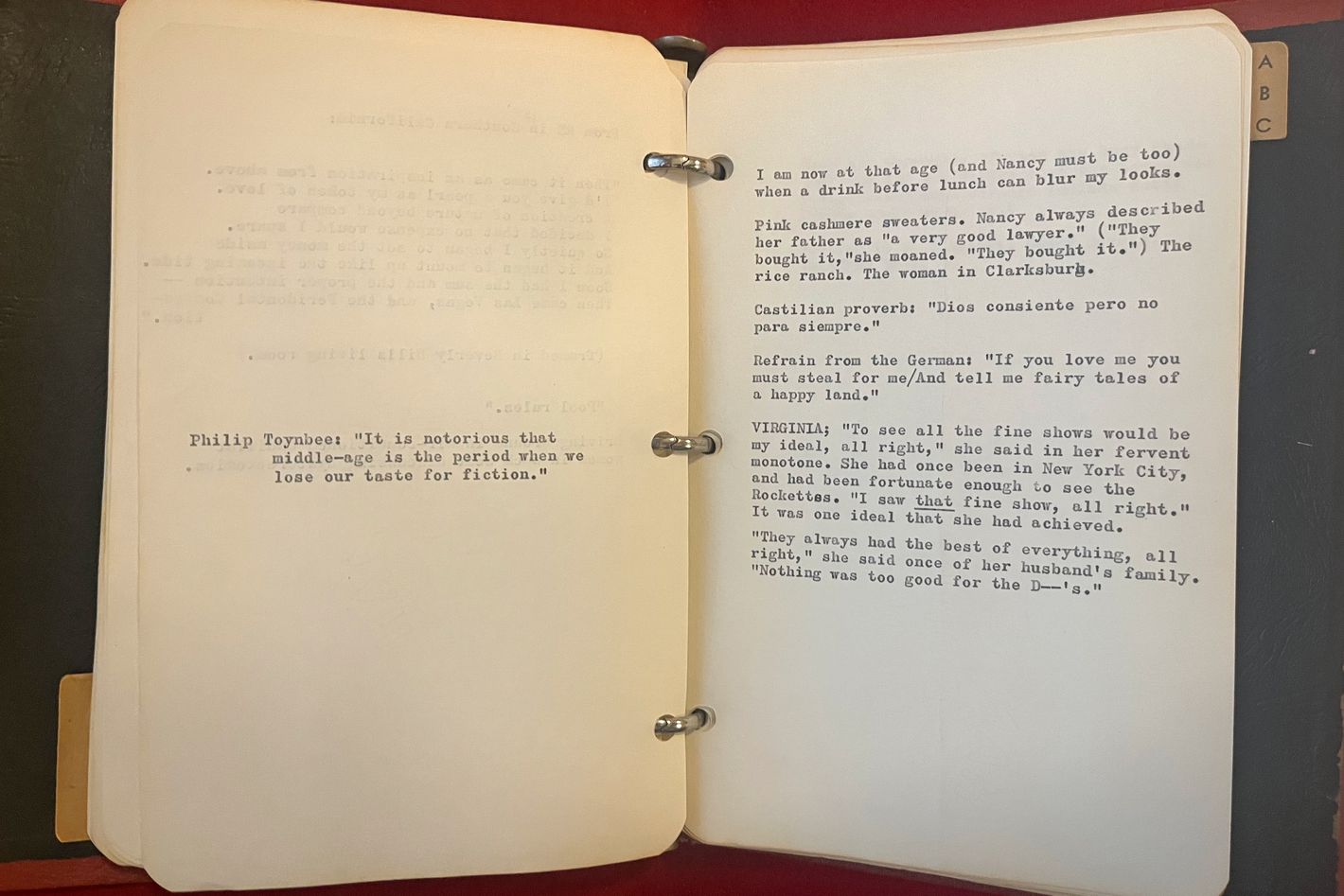

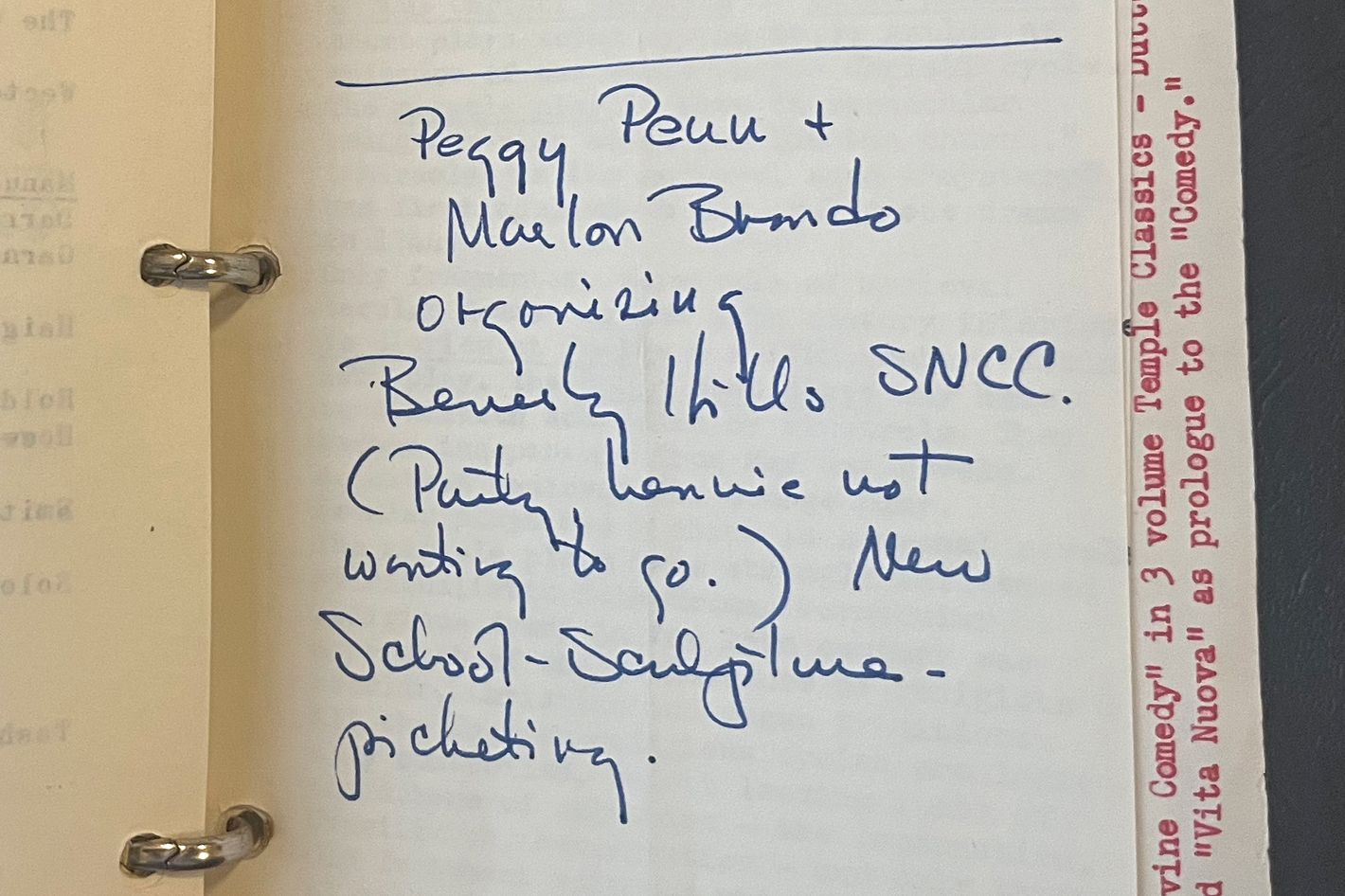
This extraordinary little looseleaf binder — undated, though one page makes reference to 1965 — may be among the the most revealing items in the collection. It’s a (seemingly but not really) random collection of quotes, thoughts, observations, and other bits of prose, mostly likely just Didion’s “I might want to use this” file. (They’re mostly typewritten, though one bears the handwritten addition “what am I saying here.”) Mann remarked to me that it’s a lot like the “commonplace books” that many 19th- and early 20th-century authors kept. Virginia Woolf, however, did not include an entry about Marlon Brando’s organizing on behalf of the Beverly Hills chapter of the Student Nonviolent Coordinating Committee.
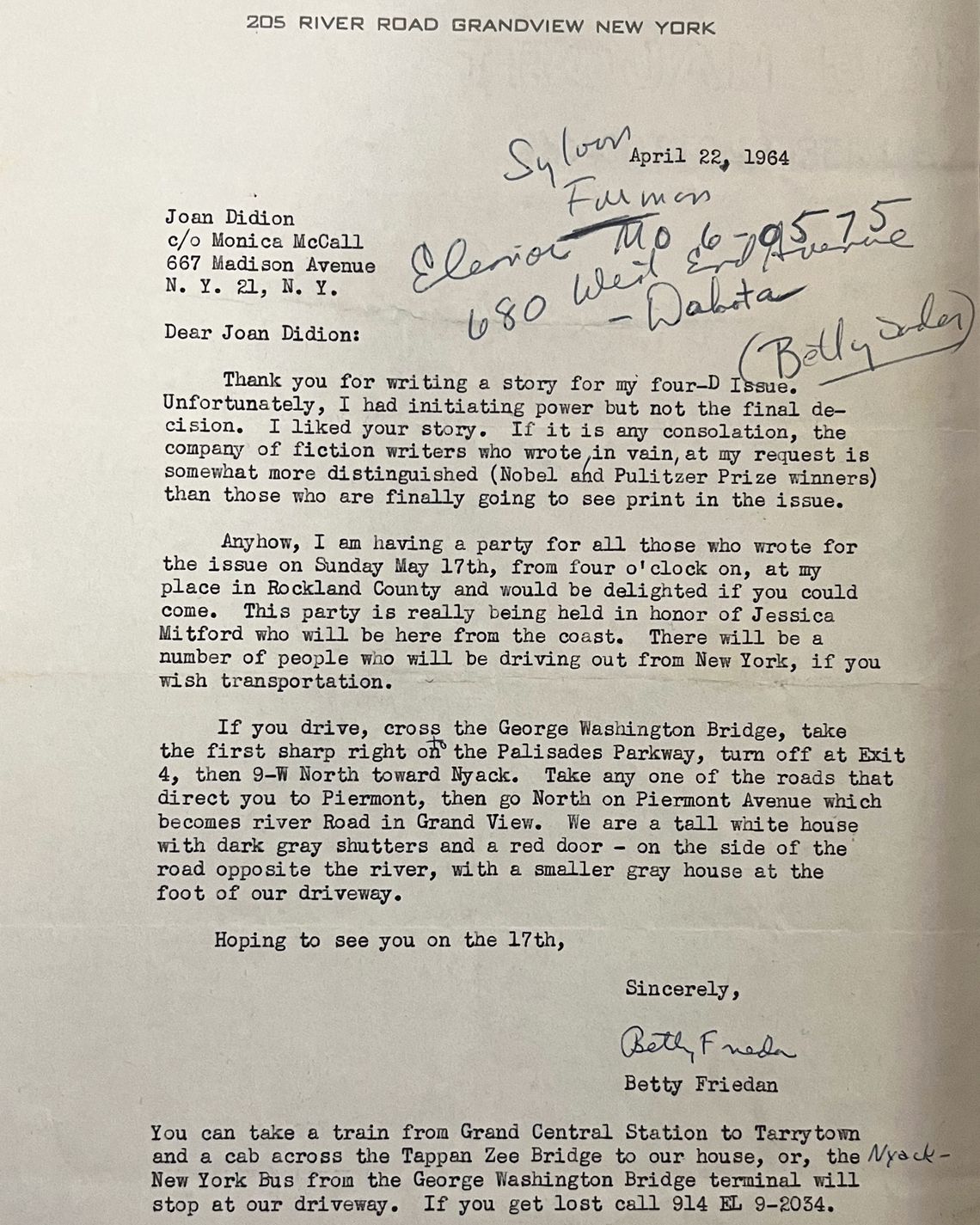
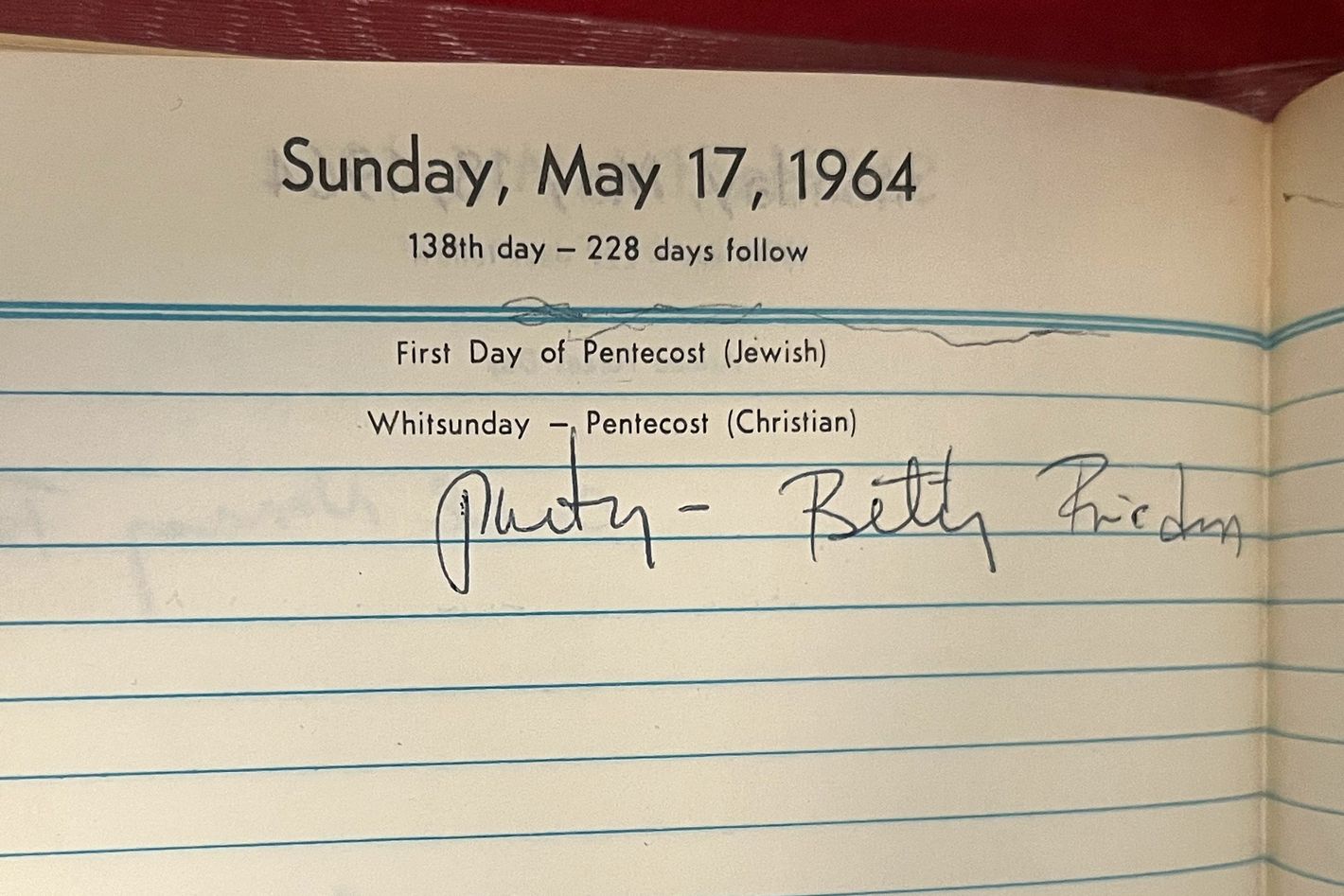
Everyone gets rejected! In 1964, Betty Friedan asked Didion to contribute to a magazine issue she was guest-editing, then (in Friedan’s telling) was overruled and killed the story. As a consolation, she invited Didion to a party at her house to celebrate the issue. Didion’s desk diary reveals that she saved the date and likely went.
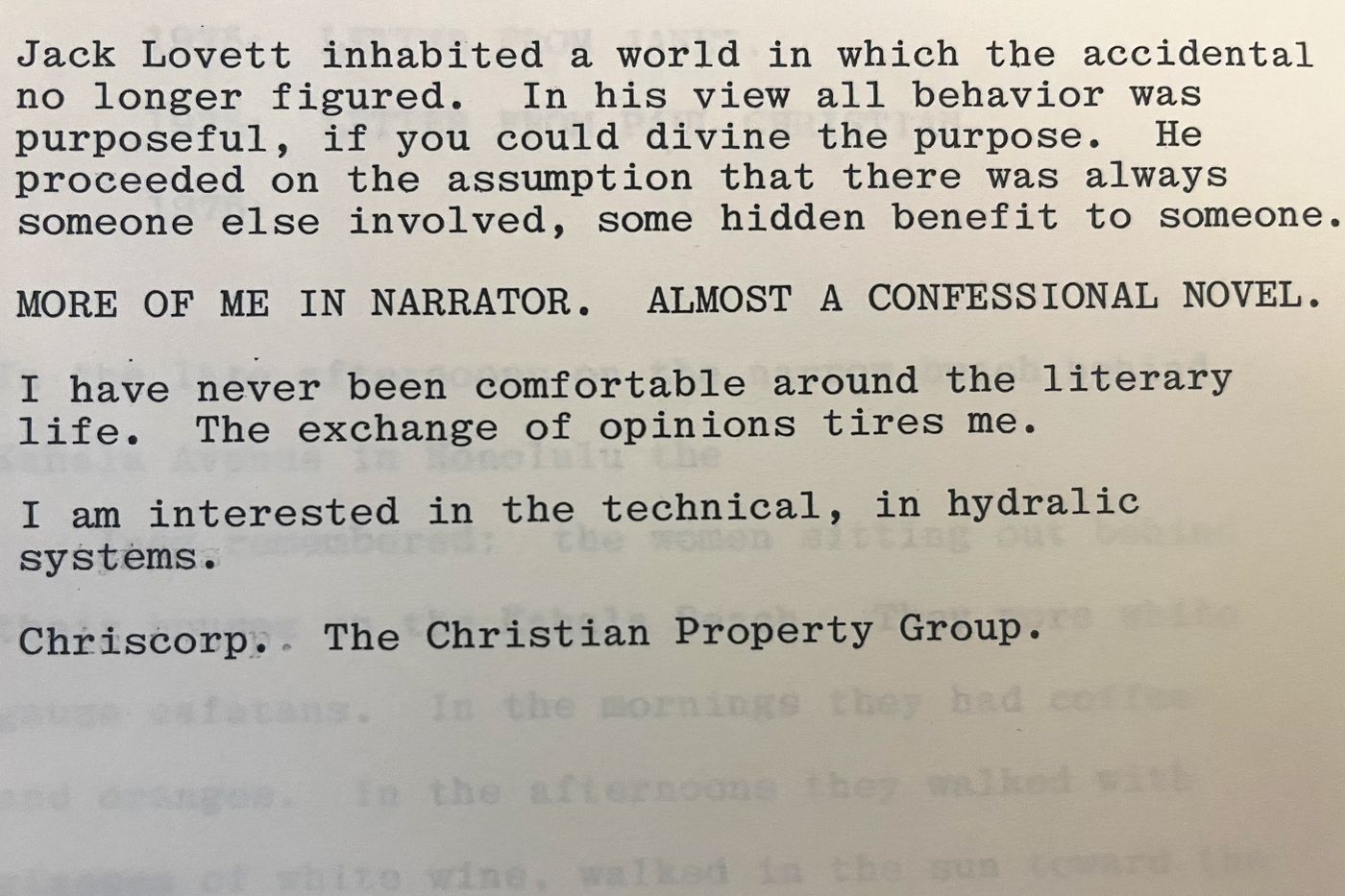
The collection contains a big sheaf of notes, dozens of pages long, for Didion’s 1984 novel Democracy. The thoughts range from plot to character to theme, and one line jumps out: “MORE OF ME IN NARRATOR.” Didion’s presence in her writing arguably grew more prominent as her career went on, perhaps reaching its peak with her memoirs of mourning, The Year of Magical Thinking and Blue Nights.
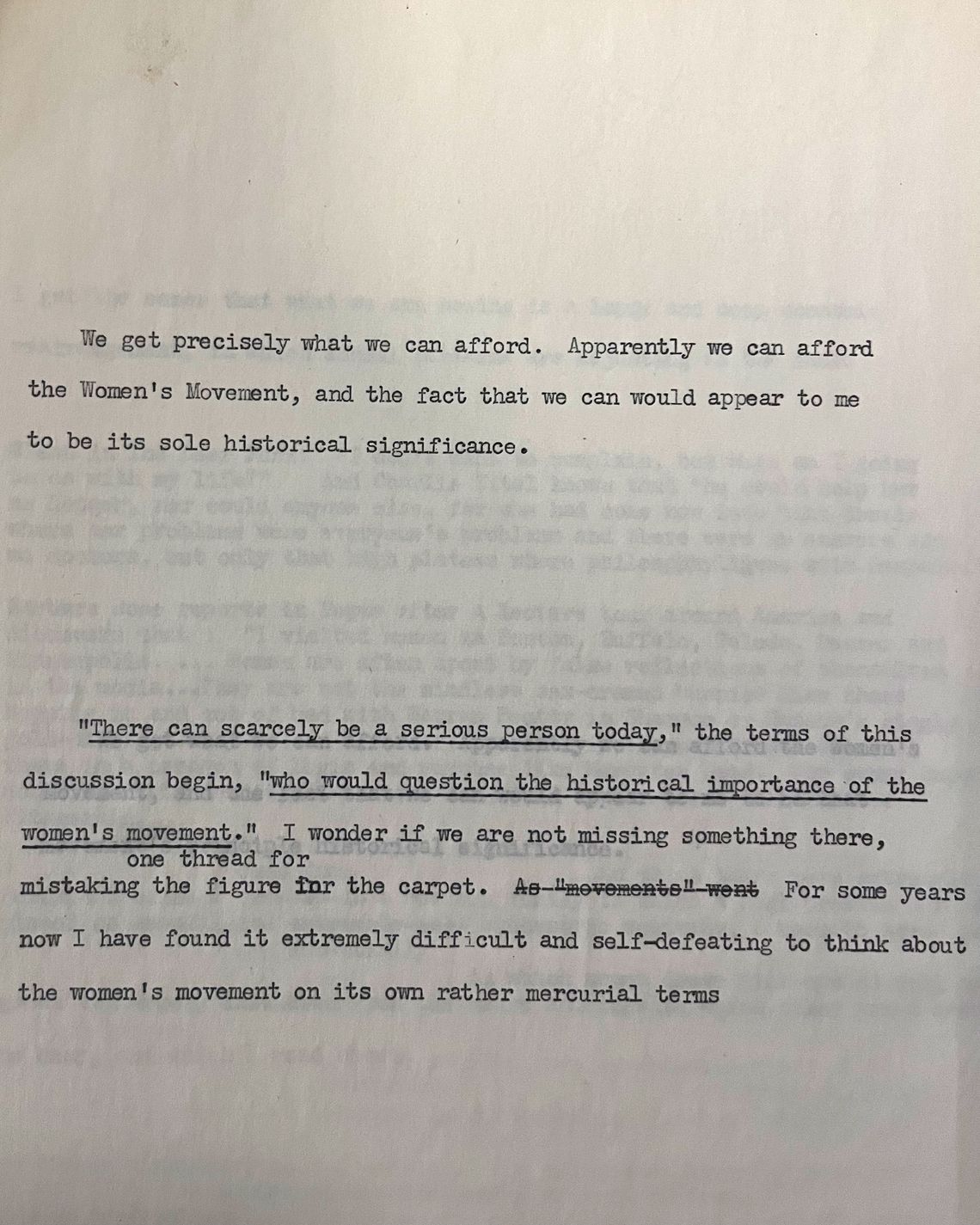
A manuscript and accompanying letter for a brief essay taking stock of the women’s movement, commissioned by Partisan Review in 1976. Didion started it, then wrote her editor saying she was repeating herself from a previous piece of writing and bowed out. But she did get a few paragraphs onto paper before marking the pages “ABANDONED,” including this tart assertion: “We get precisely what we can afford. Apparently we can afford the Women’s Movement, and the fact that we can would appear to be its sole historical significance.”
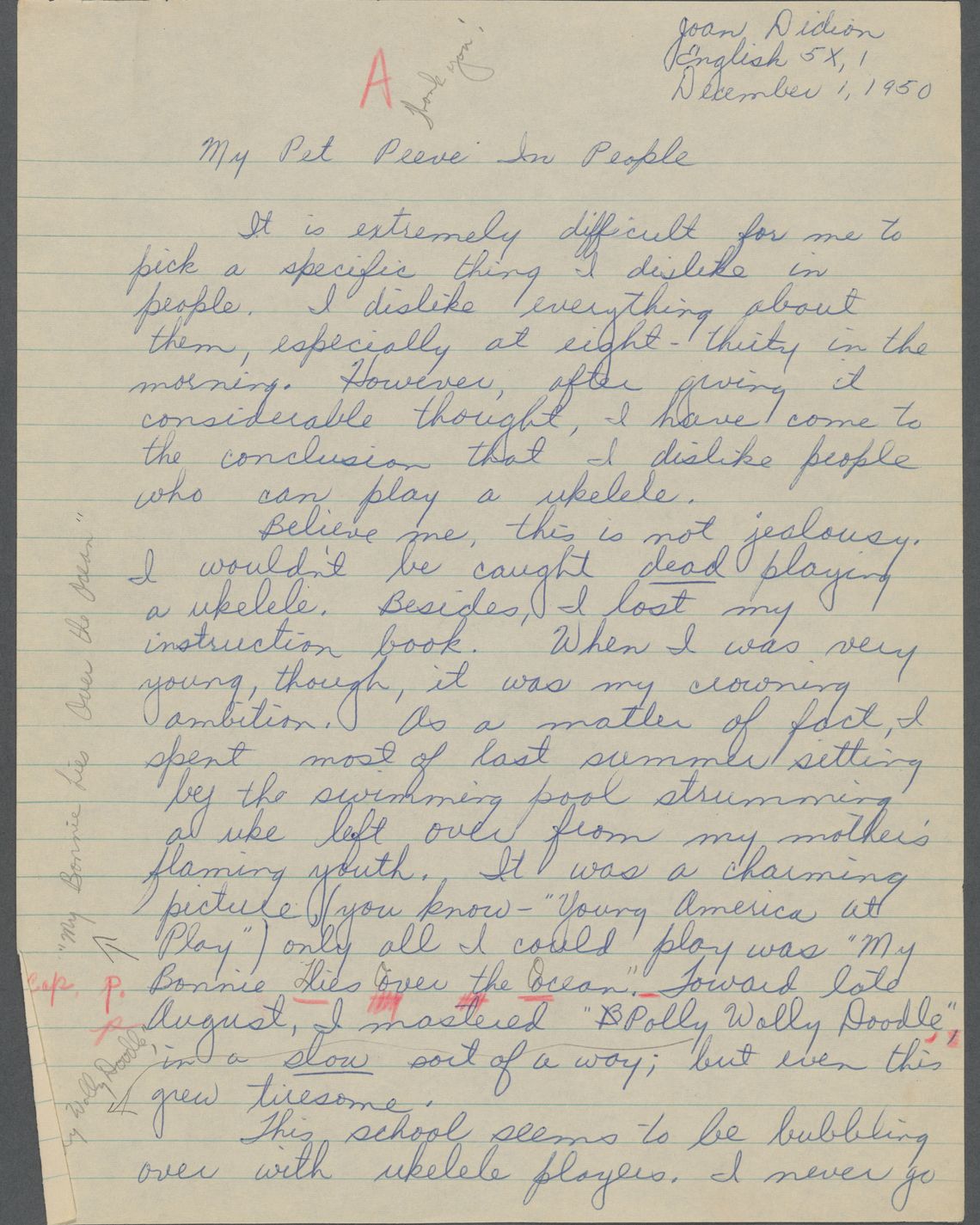
Possibly the funniest document in the archive: a school essay about pet peeves Didion wrote shortly before her 16th birthday, one in which her arch tone is already on full display. “It is extremely difficult for me to pick a specific thing I dislike in people. I dislike everything about them, especially at eight-thirty in the morning. However, after giving it considerable thought, I have come to the conclusion that I dislike people who can play the ukulele.”
Didion was not above keeping letters of post-publication praise from her subjects. Both Billy Wilder and John Wayne wrote to say that they’d liked what they read.
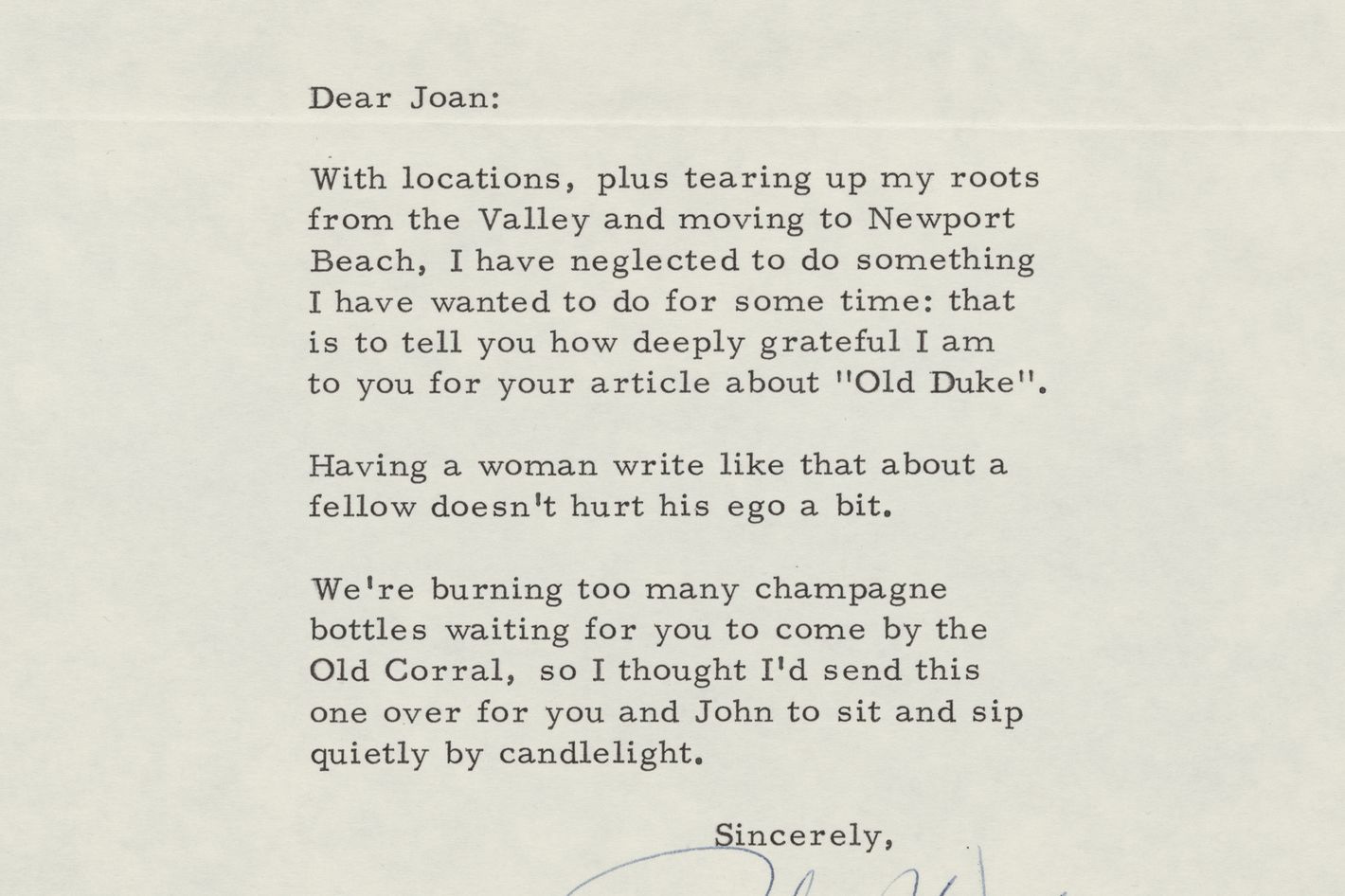
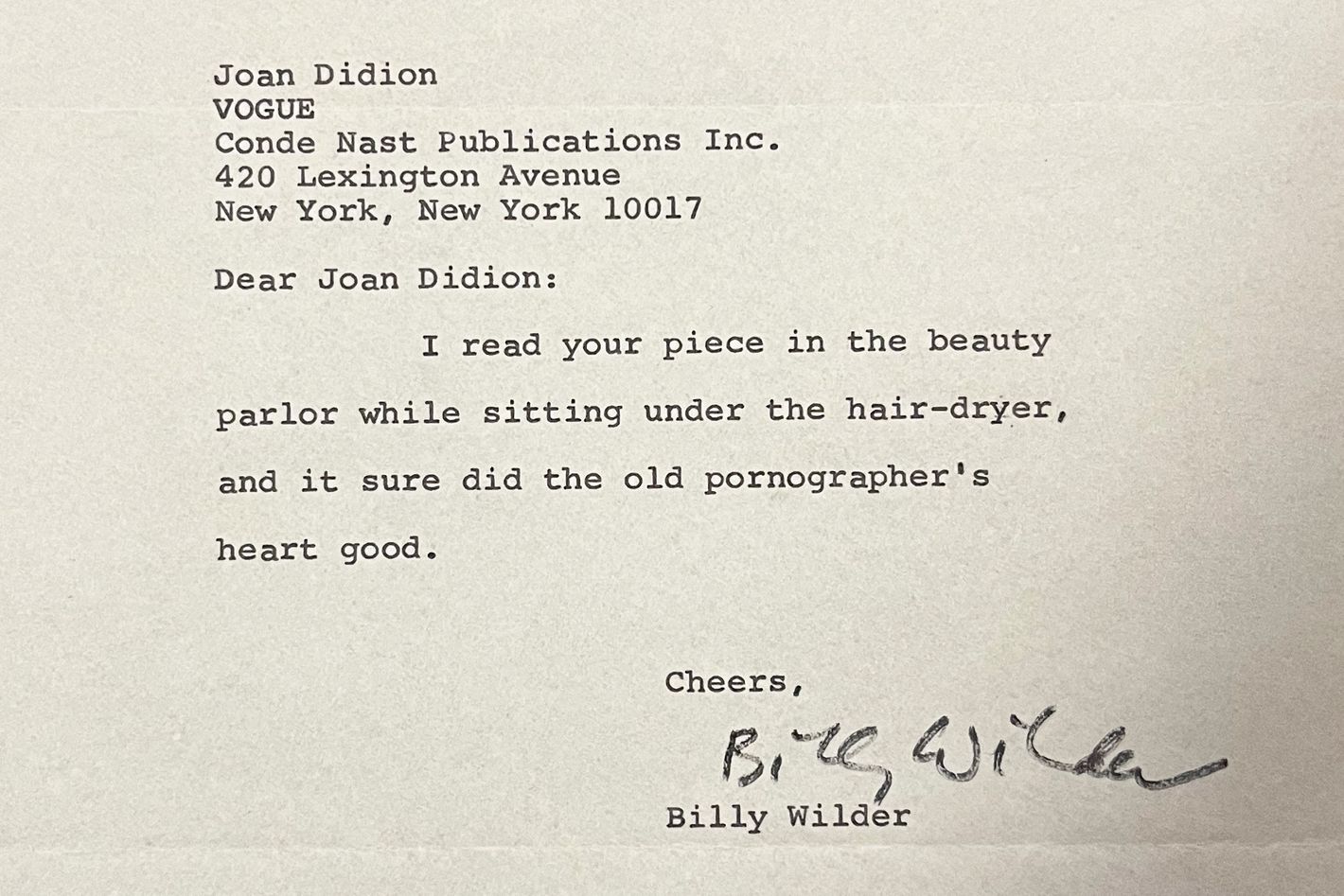

Latest News
For Sale! 2016 Sea Ray 350 Sundancer – $180,000
Reel Deal Yacht is pleased to feature a meticulously maintained 2016 Sea...
Wednesday Sports Schedule – The Republic News
Upcoming Sports Events: A Weekend of Excitement in Indiana As the spring...
Suzuki’s late-game heroics lift Canadiens to dramatic 3-2 OT win over Panthers
Nick Suzuki scored his second of the game 29 seconds into overtime...
Alcantara tosses 5 solid innings for 1st win since 2023 as Marlins beat Mets 4-2
Sandy Alcantara pitched five effective innings for his first win in 19...
King fans 11 in 7-0 win against Guardians as the Padres are off to 1st 6-0 start
Michael King struck out 11 in five innings and Jackson Merrill homered...














Leave a comment